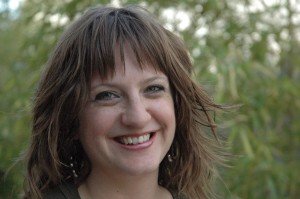3 poems by Sarah Kortemeier
The Mountain
The mountain is really a series of itself.
Deeper pockets of sky color float in its canyons.
In certain seasons, it’s difficult to tell rock face from snowfall.
The ridge line looks much sharper than it must, in actuality, be.
When you climb, the summit is sometimes visible.
You ran well, says the man who has lived here all his life.
From your home, the mountain cannot escape its pairing
with the roof of your neighbor’s home.
From your home, the mesquite tree you mean to prune
looks taller than the mountain.
From your home, the mountain is visible and therefore
you visit it rarely.
There are black bears up there and cooler air.
There are campgrounds. There was a fire. The trees are still black.
There is a smell of evergreen and a series of pit toilets.
There is a viewing point named for seven waterfalls, and one afternoon you counted them all.
The mountain bathes itself in light at every sunset
whether or not you are watching:
violent rose and deep blue that flare like love
and wash away in the coldness of space
within the span of minutes. But the mountain
is not like love. It stands over your home,
and sometimes you take a weekend day and climb,
but it’s not like love at all.
Baby Fever
Death roams the neighborhood of my dreams
like a bored teenage girl. She knocks at my door:
loose-chested, dreadlocks, chewing gum.
Honey, try a bra, I tell her.
See, this is your problem, she says. You only see
one layer underneath. I sort of want to touch
her collarbone, but don’t. She follows my eyes.
I don’t dress this way for you, she says. I know,
I say, and Why? I ask, and I tighten my grip on the screen door.
She rolls her eyes and tugs at the handle,
and I think about how they will find me:
so dressed, so covered in things I could have made
myself but didn’t.
Stone with Nineteen Corners
There is a stone with nineteen corners
in one of Machu Picchu’s walls.
The builders fit the wall
around the nineteen corners, thinking
in three dimensions at once.
They made a thing that has too many turns
to fit inside a photograph.
The scholars think they did it to show off.
Other tourists claim the stone has 30 corners,
or 32 corners, or 12, or 9. We didn’t
count them ourselves;
our guides managed us. The long-dead builders
manage us. The stone exists;
it hides parts of itself from every
line of sight; still, we rest against the wall
and look down at the valley, we go ahead
and take the photos, we submit to frames,
we make them ourselves, we carry
our children and look back at the honeymoon
photos, thinking, There was so much light
up there, thinking, what was that guy’s
name?, thinking, I’d like to see it again.
_________________________________________
 Sarah Kortemeier is a recent graduate of the MFA program at the University of Arizona. Her work has appeared in Alaska Quarterly Review, Ploughshares, Fairy Tale Review, Journal of the Center for Mennonite Writing, Sentence, Folio, Sliver of Stone, and Spiral Orb; she was also a finalist in the 2011 Gulf Coast Poetry Contest and the second annual Tennessee Williams Festival Poetry Contest. She currently serves on the library staff at the University of Arizona Poetry Center.
Sarah Kortemeier is a recent graduate of the MFA program at the University of Arizona. Her work has appeared in Alaska Quarterly Review, Ploughshares, Fairy Tale Review, Journal of the Center for Mennonite Writing, Sentence, Folio, Sliver of Stone, and Spiral Orb; she was also a finalist in the 2011 Gulf Coast Poetry Contest and the second annual Tennessee Williams Festival Poetry Contest. She currently serves on the library staff at the University of Arizona Poetry Center.
Photo by Jennifer McStotts.




0 comments